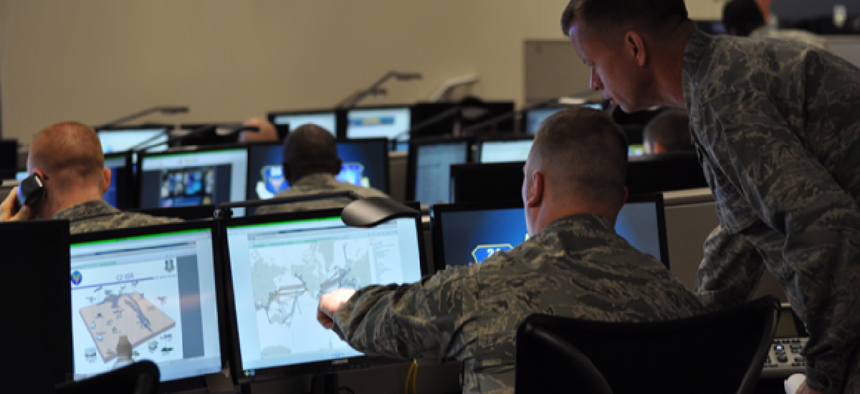Proving ground aims to spur rapid fielding of cyber tech

To counter the pace of cyberattacks, the new Air Force Cyber Proving Ground aims to rapidly get cyber tools to operators.
One of the military’s much-discussed challenges is that its institutional acquisition process cannot field cybersecurity technology quickly enough. The Air Force is trying to address these concerns with a Cyber Proving Ground -- a rapid-test, evaluation and prototyping facility to get tools into the hands of operators faster.
Noting the frenetic pace of cyber threats today, Maj. Gen. Burke “Ed” Wilson said he has yet to find a comparative historical example. “It’s a challenge because they move so fast,” he said, referring to cyber attackers from nation states, non-state groups or criminal organizations.
“We have a pretty established acquisition fielding process in the Department of Defense, so it doesn’t move at the speed of cyber, let’s put it that way,” Wilson, commander of the 24th Air Force, or AFCYBER, told GCN in an interview.
“The Cyber Proving Ground’s focus is to really partner,” Wilson said. “We have some organic capabilities to develop unique tools, but in most cases industry’s already addressed some of those problems.” At the Cyber Proving Ground, multi-disciplinary teams from the operational, acquisitions, intelligence, test and developer communities will collaborate on innovative operational cyber solutions.
Because threats are developing at “cyber speed,” Wilson said, the Air Force must be more nimble, agile and innovative, rapidly fielding applications and capabilities that “we can put in our operators’ hands very aggressively, very quickly.”
Officially called the Benjamin Foulois Cyber Proving Ground, the facility’s mission, as outlined by an Air Force fact sheet, is to “identify, enable and accelerate the fielding of innovative, operationally relevant concepts and technologies to improve Air Force, Joint, and Coalition cyberspace operations capabilities.”
In May, when forces move into the Cyber Proving Ground at Joint Base San Antonio-Lackland, Texas, the “acquisition community and our operations community [will] bring small projects in and work with industry, work with the labs, work with academia,” Wilson said. We want to be able to quickly assess technology and then “make decisions on whether we want to field or not.”
The proving ground is modeled after the open collaboration spaces in large tech firms where teams will assess tools from an operational perspective and “try it out quickly over on a range that we can set up,” he said. If the product performs well, it moves into operations. “If not, we’ll send it back to the team that’s doing the thinking and maybe modify the behavior,” Wilson said.
“Think big, start small, scale fast -- that’s the mantra we’ve given the team,” he said. “We want them to be very aggressive.”
The initial focus of the proving ground teams will be on command and control and defensive and offensive cyber operations. The idea is not to undertake daunting projects such as reconfiguring Air Force networks, he said. “We want very quick-hitting progress.”
Back in December, the force conducted a demo day with the Air Force Research Laboratory and industry and academic partners. Within the next few weeks, Wilson said, the Air Force is planning another demo day in which national lab partners will “nominate capabilities they think might be game changing or transition ready.”
NEXT STORY: What comes after common access cards?





